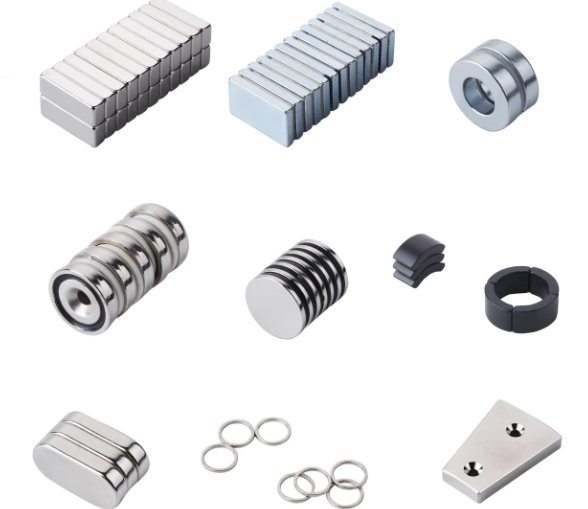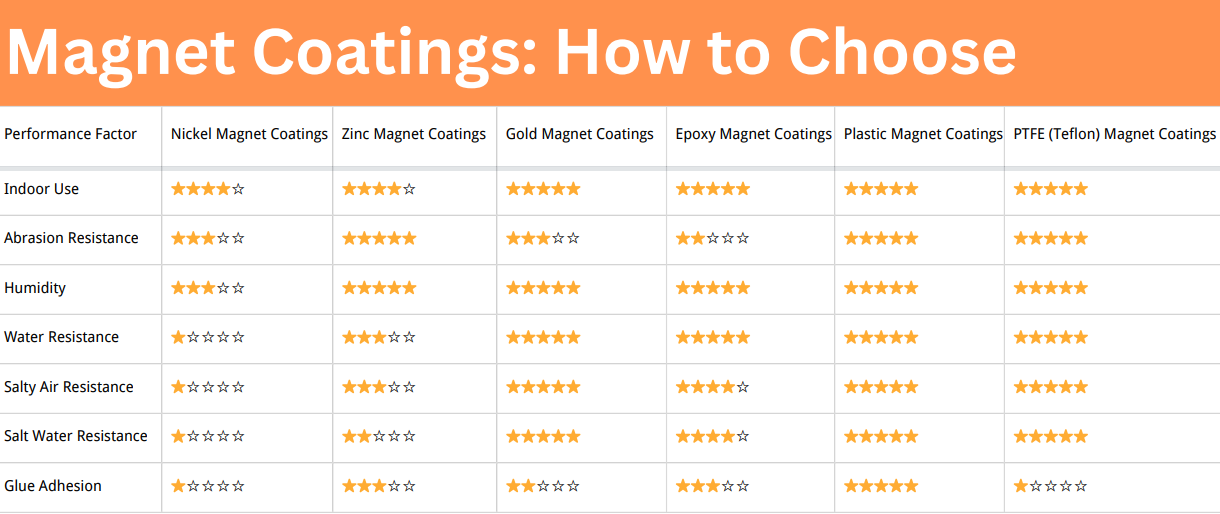Magnet Shapes, Their Applications, and Magnet Assemblies
Magnets come in many shapes, and each geometry serves a specific function depending on how the magnetic field is distributed and how the magnet is integrated into a system. Whether in industrial tools, consumer electronics, or cutting-edge motors, the shape of a magnet plays a crucial role in determining its performance and efficiency. In many cases, these shapes are incorporated into magnet assemblies to enhance or tailor magnetic behavior for a particular application.

Common Magnet Shapes and Their Typical Applications
Understanding basic magnet shapes is the first step in identifying their potential uses and advantages. Let’s start from the most common geometries and how they are applied across different fields.
--Block Magnets (Rectangular or Square)
Block magnets are typically rectangular or square in shape and have a uniform cross-section. They are widely used in magnetic holding devices, separators, and position sensors. Because they provide a broad, flat surface, they deliver a strong and uniform magnetic field, making them ideal for applications where secure contact and consistent force are needed.
--Disc Magnets
Disc magnets are circular and flat, with a large diameter-to-thickness ratio. They are commonly found in speaker systems, magnetic brakes, and small motors. Their symmetrical design makes them particularly effective in applications involving rotation, where a balanced magnetic field is essential.
--Ring Magnets
Ring magnets resemble discs but feature a central hole. This geometry makes them ideal for use in rotary encoders, magnetic bearings, and couplings. The hole allows them to be easily mounted on shafts, and the circular symmetry supports even distribution of magnetic flux, which is useful in motion control systems.
--Cylinder Magnets
Cylindrical magnets are solid rods that provide concentrated magnetic fields at their poles. They are often used in magnetic probes, lifting tools, and medical devices. Their elongated shape allows them to generate a focused magnetic field, particularly useful in applications that require pinpoint accuracy or deeper field penetration.
--Horseshoe Magnets
Horseshoe magnets are shaped into a U, with the two poles brought together. This shape puts the two ends in close proximity to each other, creating a concentrated magnetic field between them that makes the magnetic force higher in a small space. These magnets are used conventionally in lifting equipment, clamps, and in classrooms to demonstrate magnetic attraction.
--Arc and Segment Magnets
Arc-shaped or segment magnets are curved sections of a ring or cylinder and are particularly important in electric motors and generators. These magnets are designed to conform to the inner or outer surface of a rotating component, maximizing contact and magnetic interaction. They are frequently used in brushless DC motors where high torque and efficiency are required.
--Custom or Irregular Shapes
Certain applications demand magnets in specialized geometries specific to a particular constraint. Irregular shapes are often employed in medical devices, precision sensors, and specialty tools. Although more difficult to produce, irregular magnets can provide important performance benefits by maximizing the magnetic field exactly where it is required.
Magnet Assemblies and Magnet Shapes
--Magnet Assemblies and Magnet Shapes
Each magnet shape is capable of a multitude of different functions on its own, but when assembled together, the magnetic field can be shaped in more intricate ways by engineers. Such assemblies can comprise soft magnetic material, accurate alignment, and exact arrangements for steering or focusing magnetic flux.
Magnet assemblies are intentional systems in which magnets are paired with other components to acquire desired performance characteristics. Let us discuss some of the most notable types.
--Halbach Arrays
A Halbach array is a specific arrangement of magnets in which magnetization direction rotates through the array. The arrangement concentrates magnetic field in one direction and effectively nulls it in the other. It is used in magnetic levitation, brushless motors, and high-energy particle accelerators, offering a highly intensified and compact way to steer magnetic energy.
Further reading: Everything You Need to Know About Halbach Arrays
--Magnetic Rings and Clusters
In some applications, multiple magnets are arranged in circular or clustered configurations to produce radial or axial magnetic fields with uniformity. These configurations have particular use in speakers, rotary sensors, and magnetic couplings, where balanced and precisely defined magnetic forces are needed.
--Magnetic Circuit Assemblies
Magnetic circuits are made up of permanent magnets in combination with ferromagnetic materials such as steel or iron in order to control magnetic flux path. They are used in actuators, sensors, and transformers to improve magnetic field delivery efficiency as well as the control over magnetic performance.
--Segmented Motor Magnets
Segmented magnets, frequently in the shape of arcs or wedges, are arranged around the stator or rotor in electric motors. Segmentation lowers cogging torque and enhances rotational smoothness, which is imperative in high-speed and high-efficiency motor design.
Summary Table: Magnet Shapes, Applications, and Assemblies
|
Magnet Shape |
Typical Applications |
Key Characteristics |
Related Assemblies |
|
Block |
Clamps, separators, sensors |
Uniform field, flat surface contact |
Magnetic circuit assemblies |
|
Disc |
Speakers, brakes, motors |
Symmetrical field, compact design |
Halbach arrays, magnetic rings |
|
Ring |
Encoders, bearings, couplings |
Shaft mounting, radial flux |
Ring magnet clusters |
|
Cylinder |
Probes, medical tools, lifting |
Strong axial field at poles |
Magnet clusters, probes |
|
Horseshoe |
Lifting tools, clamps, demos |
High flux density in small gap |
Magnetic holding tools |
|
Arc/Segment |
Motors, generators, actuators |
Curved to match motor geometry |
Segmented rotors, motor assemblies |
|
Custom/Irregular |
Medical implants, sensors |
Application-specific designs |
Custom-built assemblies |
Conclusion
Magnet shape is not just a matter of geometry—it’s a key performance factor in virtually every magnetic application. From simple block magnets providing stable holding force to carefully arranged arc segments driving brushless motors, the form of a magnet is deeply tied to its function. For more shapes and customization, please check Stanford Magnets.














